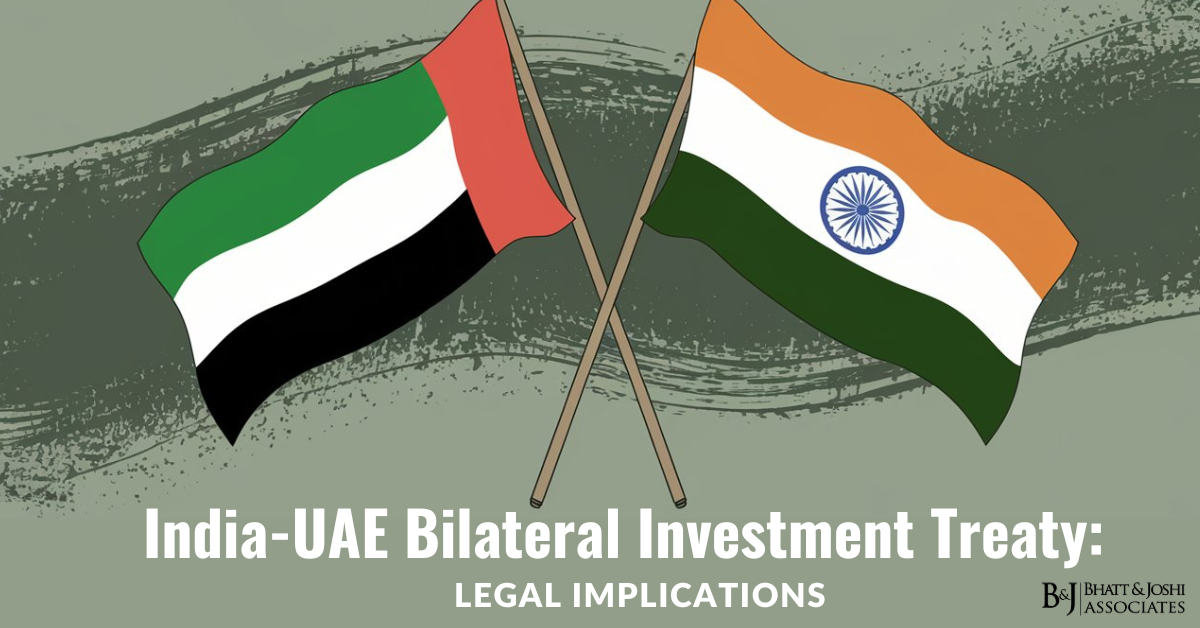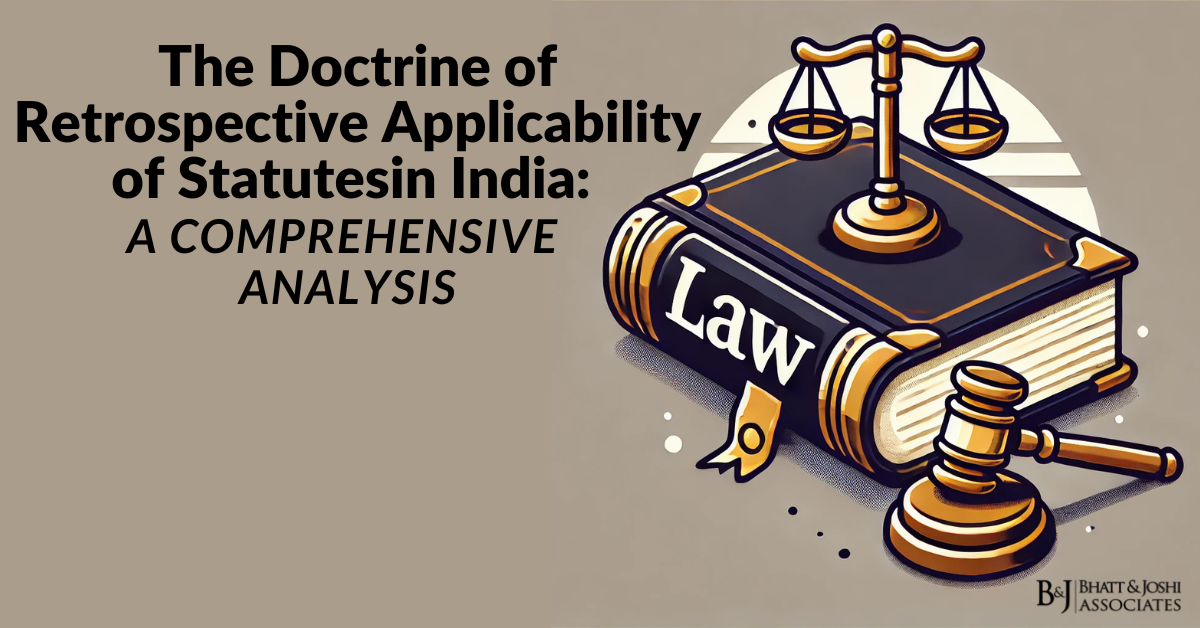Introduction
The India-UAE Bilateral Investment Treaty (BIT) is one pillar that provides directed economic cooperation, particularly in investments with the protection of investors’ needs. As tend to take globalization and the development of economies globally, bilateral investment treaties cater to the legal policies needed for disputes, investor satisfaction, and economic growth and security. The BIT between India and the UAE is no exception, which also contains legal undertakings to encourage and safeguard investments amid international and domestic laws. The scope of such treaties goes beyond law and touches economic diplomacy and relations two steps further.
Background of India-UAE Economic Relations
For centuries, India and the UAE have shared a strong historic and strategic relationship built on trade, culture, and economic exchange. The trade partnership between the two countries is deepened further by the UAE being one of India’s largest investing countries in various sectors such as infrastructure, energy, technology, and real estate. The BIT has strengthened economic relations further, as it legally aims to increase foreign direct investment (FDI) inflows which helps integrate the economies. India and the UAE have strong mutually beneficial relations in trade where the UAE significantly invests in the Indian economy making it a critical player in India’s oil and energy security while India provides a broad market for UAE’s exports.
The BID created in 2013 coincided with the time India tried to position itself as a foreign investment hub, ever since India has amplified attempts to reel in foreign investment. The shifts India has made to its foreign policy, made bilateral investment treaties less favourable which led to many of them, including the UAE BIT, being scrapped to create more appealing agreements aligned with India’s Model BIT of 2016. The BIT incorporated harsh conditions involving the breakdown of disputes, state responsibilities, and investor benefits all tailored within India’s narrative to how India dealt with investment arbitration. Even though economic cooperation continued after the BIT was scrapped, it showed a new approach was required to balance investor protection with Indian regulations.
Key Provisions of the India-UAE Bilateral Investment Treaty
The BIT provisions of India and the UAE focus on safeguarding the investors and preserving the authority of the state at the same time. While the principles of the treaty are appreciated at the international level, their implementation is customized to the specific economic and political situations of India and the UAE. One such aspect is the provision on fair and equitable treatment (FET) of the investment which, guarantees that foreign investors will not face discrimination or hostile action. This aspect is particularly useful in sustaining investors’ trust in complex regulatory systems.
Regarding expropriation, the treaty terms undertake direct and indirect investor compensation. It lists criteria that form the basis of lawful expropriation, for instance, public purpose, due process, and fair market value compensation. These policies are very important particularly for attracting foreign direct investment for the long-term, especially in capital-intensive sectors.
Yet another pillar of the BIT is the Investor-State Dispute Settlement (ISDS) mechanism. It allows an investor to file claims directly against the host state for violation of treaties. Disputes are usually settled by international arbitration by UNCITRAL or ICSID rules, which ensures neutrality and compliance with international standards. The ISDS clause, however, has stirred discussions on whether it would erode state sovereignty to public policy issues.
The BIT contains national treatment and most-favoured-nation (MFN) treatment provisions, and antidiscrimination clauses denying less favourable treatment to foreign investors compared to domestic or other foreign investors. Such provisions are particularly important because they are necessary for the maintenance of fair competition and the avoidance of discrimination. Nevertheless, more often than not, the boundaries of these provisions are arguable, especially within multi-regulatory systems.
Regulation of Investments Under the Bilateral Investment Treaty
International laws, together with domestic legal frameworks, regulate the India-UAE BIT. Some of the key aspects include tribunal jurisdiction, compliance with domestic laws, and regulatory discretion of the host state. There are always jurisdictional questions about an “investor” and an “investment.” These terms are central to the discourse surrounding the limits of treaty benefits and the jurisdictional powers of the arbitral tribunal.
In seeking the benefits of the treaty, an investor’s compliance with the domestic laws of the host state is an important element. This principle calls for adherence to local laws and obtaining necessary approvals before any investment activity is undertaken particularly non-compliance with local laws. regulation may result in investors being barred from access treaty protections as it happened with several other arbitration disputes involving India.
Another important feature of the BIT is the regulatory autonomy of the states. The treaty provides for the protection of investors but also allows the host state to legislate in the area of protection of public health, environmental safeguards, and national security. Such a blend is very important to mitigate the fears of the interference of international investment law in the internal management of the country.
Legal Implications of the India-UAE Bilateral Investment Treaty
The ramifications of BIT has assumed deep significance in the context of both countries’ legal systems and their participation in international arbitration. One of the most important is the improvement of investor trust. BIT helps FDI with a legal framework which makes international investment predictable, especially in developing economies. In turn, this predicts economic development and diversification. Investors feel more secure that the provisions of the treaty will be honoured, especially in unstable or emerging markets.
On the other hand, ISDS implementation has not been all gain. While allowing investors some protection, it has been taken advantage of as an erosion of state power. Examples like White Industries v. India showcase the infamous issues India faces when defending itself under bilateral treaties. This has weakened India’s investment treaty policy and caused rethinking of investment treaties which led to the 2016 Model BIT. It moves toward the protection of regulatory sovereignty while trying to reassure international investors.
The India-UAE BIT has changed significantly because of its alignment with India’s Model BIT. Its provisions, like the all-inclusive definitions of investment and the absence of MFN clauses, are intended to deal with the possibility of wide-ranging interpretations by arbitral tribunals. Also, the emphasis on pre-arbitral negotiation and local remedies in the Model BIT reflects the Indian effort to control the level of judicial self-restraint in enforcing investor rights.
Case Laws and Judgments
The legal aspects of BITs usually relate to the arbitration and judicial proceedings of a certain case. While particular instances under the India-UAE BIT might be few, other instances that include India and other countries still offer useful information. In the case of White Industries v. India, an Australian mining company sued India under the India – Australia BIT for compensation using an MFN clause after suffering judicial delays in India. His is a classic case of reverse discrimination. The tribunal’s decision which went in favor of White Industries revealed the extent to which states are exposed to aggressive interpretations of BIT provisions.
Also important is the case of Vedanta Resources v. India which exemplifies the inadequacies in the ISDS system. For other investors, the cancellation of mining licenses by the state was a contentious issue. The American investor’s right to the controversially needed license is pitted against the state’s right of regulation. Disputes about tax demands illustrate the gaps in legislation as in the Kia Motors Corporation v. India case.
Judicial Perspectives in India
Indian courts have grappled with the interplay between BIT obligations and domestic laws. The Supreme Court’s decisions in cases like BALCO v. Kaiser Aluminum and Reliance Industries v. Union of India have shaped the legal landscape of arbitration, emphasizing the balance between party autonomy and public policy considerations. These decisions reflect India’s evolving approach to investment disputes, which seeks to harmonize international obligations with domestic legal principles.
Policy Considerations and Challenges
Like many other bilateral investment treaties (BITs), the India-UAE BIT attempts to accommodate the conflicting policy issues of protecting an investor’s interest while at the same time allowing a State to exercise its sovereignty. The India-UAE treaty must protect investors while simultaneously considering economic realities. The omission of portfolio investments, as well as measures aimed at the environmental and social labour standards, are important. Make sure policies are created that allow treaty provisions to keep pace with modern issues.
Another important concern is how to mitigate the risk of ISDS. State (being parties to an agreement) has become more wary of broad and arbitrary international arbitration decisions [expansive arbitral].
Chill regulatory policies are also introduced, making it compulsory to provide for
- Joint interpretative statements, need for appellate review systems and, permanent investment court.
- Also, supporting policies that promote sustainable investments is important.
The Framework of the treaty must not conflict with policies associated with sustainable development that take into consideration the fact that the economic gains must be accompanied by socially and environmentally friendly benefits.
Future Prospects of the India-UAE Bilateral Investment Treaty
The India-UAE BIT is poised to play a critical role in shaping economic and legal ties. As India continues to attract investment while safeguarding its regulatory autonomy, the treaty will likely undergo revisions to address emerging challenges. Strengthening institutional frameworks for dispute resolution, fostering transparency, and incorporating lessons from past disputes will be crucial. The integration of digital technologies and sustainable investment practices into the treaty framework represents an opportunity for innovation and progress.
Conclusion
The India-UAE Bilateral Investment Treaty is an important step towards achieving economic cooperation and guaranteeing legal certainty. This treaty seeks to strike an equilibrium position between affirming the state’s sovereign power and protecting the rights of the investors. Although challenges remain in the area of dispute settlement, the gaps in the treaty’s current form can be addressed through legal and policy reforms as these gaps can help the UAE and India emerge as global investors. The adaptability of the treaty will determine its relevance in the future and will be subjected to India and UAE’s ability to ensure investment and growth whilst overcoming the changing economic and political aspects.














